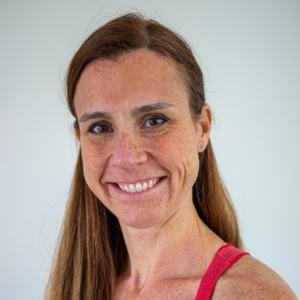by Sarah Apple Kingsley, pt, dpt
The neurological system is a marvelously intricate network, and ongoing research continues to shed light on the profound connection between the brain and body. While we’ve long recognized the benefits of specific exercises for rehabilitation and the restoration of coordination lost due to injury or disease, the therapeutic value of yoga for this population has only recently come to the forefront.
Currently, I work part-time at a neurology office, where we focus extensively on conditions such as Parkinson’s Disease, Dementia, post-Stroke, and Cerebral Palsy. The integration of yoga poses and techniques has proven to be exceptionally beneficial, fostering improved flexibility, motor coordination, and body awareness among our neurological patients.
In the realm of Parkinson’s rehabilitation, one well-researched exercise program, LSVT BIG movements, has demonstrated its effectiveness in enhancing functional mobility and reducing fall risk. Interestingly, many of the movements within this program bear striking similarities to existing yoga poses, such as Warrior 2, High Crescent Lunge, and Runner’s Stretch—stances that we regularly incorporate into our LYT practices. Another set of movements, the PWR! moves, align closely with the BIG method, featuring quadruped (hands and knees) poses like Thread the Needle and stepping the foot outside of the hand. These exercises aim to stimulate trunk rotation, hip and ankle mobility, reciprocal movement patterns, and weight shifting—all elements integral to yoga practice.
One crucial aspect, particularly for individuals with Parkinson’s or other neurological deficits, is the prevalence of tight fascia resulting from trauma or disease. Unlike many physical therapy exercises that target specific muscles or joints, yoga movements address entire fascial lines, providing a comprehensive approach to stretching and mobilization. The result? A more significant impact on overall flexibility and mobility—a true “greater bang for your buck.”
Mobilizing the fascia plays a pivotal role in reducing rigidity, enabling access to muscles, and facilitating ease of movement previously inaccessible to patients. However, not all yoga practices are equally effective. The specificity and sequence of movements in our LYT yoga classes are tailored to resonate with neurological populations. Drawing inspiration from the developmental movement patterns of infancy—starting on the back, progressing to all fours, and eventually standing—we guide our students through a process of relearning movement and coordination.
For individuals grappling with neurological injuries or diseases, this process is akin to rewiring the brain and motor patterns. By returning to the fundamental movements learned in infancy—often overlooked in modern life and many exercise classes—we can retrain the brain and body to coordinate effectively. Weight-bearing exercises, especially on all fours, stimulate proprioceptors in the shoulders, hips, and knees, fostering proper engagement and support for broader ranges of motion.
As we progress to limb movement and opposite arm-and-leg motions, we not only encourage coordination between the right and left brain hemispheres but also simulate a natural walking cycle. The foundational principles and movements of the LYT Method have yielded remarkable results in patients, including higher levels of function, improved quality of life, reduced caregiver burden, significantly decreased fall risk, and enhanced fall recovery strategies. Equally noteworthy is the positive impact on mood, with decreased depression and anxiety—a common challenge in populations that have undergone significant physical and emotional stress.
In conclusion, witnessing the transformative outcomes achieved through the principles and movements of the LYT Method has been truly inspiring. As we navigate the realm of neurological rehabilitation, our focus remains on fostering not only physical recovery but also an improved overall well-being for our patients, clients, family and friends!











